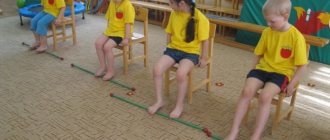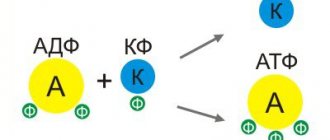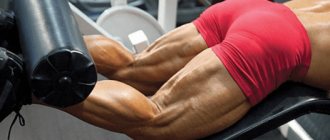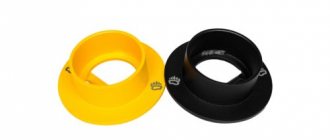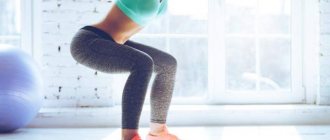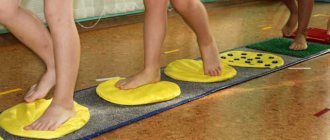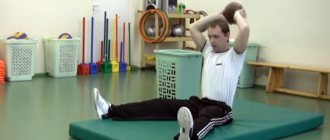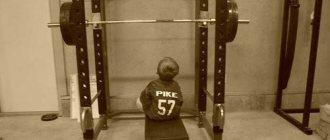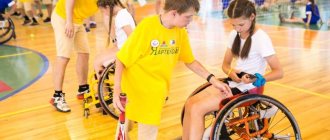There are many situations where life depends on the speed of reaction. A reaction is the body’s response to any stimulus, after which an immediate action occurs to interact with this stimulus (threat). To put it simply, exercises that develop reactions have the ultimate goal of teaching the brain to control the body automatically. This requires exercise and a certain psychological preparation. This will be discussed in more detail in the article.
What is a reaction
First, you need to briefly define what is meant by this concept and what reaction speed is. A reaction is a kind of mechanical action caused by a stimulus in a certain way in an automatic mode. There are three types of main stimuli: sound, visual, tactile. A person is designed this way: he reacts to different signals at different speeds.
Reaction speed is the time interval between the appearance of a signal and the response to it. It largely depends on heredity, the structure of the nervous system, age, gender and other factors. An equally important condition is the person’s awareness of the specific situation in which he has to act. After all, tennis, hand-to-hand combat, e-sports or driving are different areas of human activity. And only then ask yourself how to develop a good reaction in a particular area. However, there are a number of general exercises and recommendations that can improve attentiveness, composure, overall coordination and brain-body interaction, as well as other important characteristics. They will not only help answer the question of how to develop a reaction and improve your well-being, but will also simply help you to lift your spirits.
Reaction exercises
A set of specialized exercises that are used in training to increase the speed of motor reactions is focused on repeated repetition of movements, with a gradual transition from simple to complex tasks. For athletes involved in martial arts, the main stimulus is the visual signal, so attention is paid to developing the ability to quickly respond to a visual stimulus (sensorimotor reaction).
Exercises with a tennis ball
- Throwing the ball at the wall and catching it, alternately, with the left and right hand, varying the force of the throw.
- Catching the ball from a partner - standing with your back, at the signal, turn around and catch the ball.
- Deflections from a ball thrown to the head by a partner (the speed of the throw and the distance between partners vary).
- Hitting the ball to the floor with different rebound forces and catching it, on the spot and while moving from a fighting stance.
Reaction ball exercises
The “trick” of the ball is the unpredictability of its rebound. Options for catching it from a standstill and on the move are being worked out.
Exercises with a pendulum bag
A small bag of sand (up to 300 g) is attached to the ceiling (crossbar) and swings.
- Pushing the bag forward and practicing slopes to the left/right of the returning projectile.
- A dodge while simultaneously simulating a counterattack with a single strike.
- Dodge with a counterattack from a series of blows.
Working with the ball
This is the most basic level, designed to improve overall coordination of movements. For such activities, you only need a small ball, convenient for grasping with your hand, as well as regularity in performance.
When approaching the wall, you need to hit it with the ball and catch it with the same hand that was used to throw. You need to start with a strong hand (leading). This monotonous exercise lasts 10-15 minutes.
Then they do the same thing, but only with the other hand.
The next task becomes more complicated and at the same time more interesting. Throwing is done with the right hand, and catching the sword with the left.
Agility in sports and fitness
Agility is a complex motor quality. It integrates precision and speed of movement, reaction speed, sense of balance, flexibility, and coordination. Moreover, it is not so important to learn to achieve the maximum values of these qualities as to be able to demonstrate them in doses. In other words, to successfully solve a motor task, you need to be able to develop a movement of the required amplitude, direction and strength at each specific moment in time. It is important to learn to accurately coordinate your movements, quickly and in a timely manner to move from one movement to another. These abilities are based on the well-functioning functioning of the nervous system and muscles.
Although agility is considered an innate quality, this does not mean that it cannot be trained. When a person develops reaction speed or coordination of movements, he thereby improves dexterity. Dexterity directly depends on experience. The more varied speed and reaction exercises a person performs, the richer his motor experience becomes, and the more accurately he can predict the development of events. His reaction to external stimuli becomes very fast. A dexterous person is able to react with lightning speed to a change in the situation - sometimes even before this change has occurred.
Agility is an important quality for people interested in sports and fitness. To achieve success in boxing, gymnastics, martial arts and team sports, you need to purposefully develop your agility. But, on the other hand, all of the listed sports disciplines and many other types of sports and fitness in themselves perfectly develop coordination, accuracy and speed of movements. Let's look at the main types of physical exercises that are used to develop dexterity.
Anyone who wants to improve their agility can use the following set of exercises:
- Dribbling two balls at the same time (straight-line movement, high knees).
- Jumping over a bench and hitting the ball against the wall.
- Dribbling the ball and performing jumps in place with a 90-degree turn.
- Somersaults without a ball and with a ball: toss the ball, do a somersault, catch the ball.
- Stand facing the wall, raise your leg. Throw the ball against the wall and catch it with both hands. While performing the exercise, keep your eyes on the ball.
- Let the ball roll in a straight line and jump over it. Jumping can be done on two legs or on one.
- Alternating jumps from foot to foot: standing on one leg, jump and land on the other leg.
- Jumping from side to side. Place your feet close to each other and straighten up. Keeping your feet together, jump left and right as quickly as possible. Lower your arms down or bend them and hold them near your chest.
- Balance on one leg for a minute. Extend your arms to the sides. Turn your head left and right. Do not keep your gaze on surrounding objects - this makes it easier to maintain balance. In the future, to complicate the task, practice with your eyes closed.
- Toss a tennis ball and catch it. First perform a series of repetitions with your right hand, then with your left. A slightly more complicated version: toss the ball with one hand and catch it with the other.
- Push-ups with clap: stand upright while lying down, push off powerfully while lifting your body, lift your hands off the floor, clap your hands.
A set of exercises with a partner:
- Squat down, facing your partner. Raise your hands, connect your palms with your partner’s palms. Sharply push off from each other, group, fall on your back, do a somersault back. Return to starting position. Repeat several times.
- Moving on your hands, roll the ball in front of you. Your partner holds your legs.
- One person jumps, the other spins a double-folded jump rope under his feet. You need to rotate the rope suddenly and at different speeds. You can also rotate the rope over your head, forcing the athlete performing the exercise not only to jump, but also to bend down.
Sports such as gymnastics, boxing, tennis, football, volleyball, and basketball are most suitable for developing agility. In addition, it is useful to water ski, play ping-pong and badminton, and engage in martial arts. Obstacle running, street fitness (workout, parkour), and regular and roller skating are good for developing agility. Jumping rope helps improve coordination of movements. Jumps should be varied: on two legs, on one, with crossed arms, with double scrolling, with rotating the rope in the opposite direction, etc.
Coordination of movements can be significantly improved by practicing juggling. To develop a sense of balance, it is recommended to walk on curbs, rails and logs. Dexterity can be developed even while traveling in public transport. You need to let go of the handrails and try to maintain balance solely with the help of your legs. Fitness on a trampoline is also effective. It is advisable not just to jump, but to perform various figures. You need to move from simple to complex. At first, you can simply alternate different ways of falling - on your knees, on your back, on your stomach. Then learn simple exercises: stretch your legs forward and reach for your toes, spread your legs and bring them together, etc. And finally, you need to learn how to do all kinds of somersaults and somersaults.
In terms of developing dexterity, almost any sport is useful. All motor skills, if properly practiced and reinforced, increase overall agility. But it is especially useful to develop dissimilar (different types) motor skills. To do this, you need to practice different sports and periodically update your set of exercises used to train agility and reaction speed.
Exercises for coordination of movements are useful for everyone, but, first of all, for athletes, since they develop agility and speed, and help to win competitions. For those who are sure that agility is an innate quality, I would like to say that special exercises have been developed that help improve and develop this ability.
What does the concept of “dexterity” mean, which comes from “catch” - “catching”? For the ancestors, the production of a sufficient amount of food depended on this skill, i.e. hunting and fishing. The concept of “dexterity” means a complex of qualities: speed of reaction, flexibility, mobility, accuracy of movements, coordination. If they are normally developed, the body develops a tone that does not allow it to be taken by surprise in unexpected situations: a tourist, jumping over a bush near an unnoticed stream, will be able to react correctly in flight because he has developed coordination of movements.
Before starting the training, it is necessary to evaluate the current level of coordination using simple tests, for which you will need to stand on one leg and raise the bent second leg higher. After standing in this position for a minute, repeat the training for the other leg. This will help you understand on which leg it is easier to perform it, how easy it is to do it? Repeat the proposed test with your eyes closed, holding for 30 seconds on each leg. If the test is difficult to complete, then exercises to develop coordination are needed. It has been proven that over the course of a lifetime it is better to develop more than one arm and leg.
A partner is half the success
All people love to play. This is a great opportunity to hone your skills, as interaction in games is based on the principles of competition. Among other things, giving yourself various mental commands and then executing them is a tedious and ineffective task. It's another matter when a companion does it. His actions are difficult to predict. And he will do everything possible to make them different by surprise. Therefore, when the question arises: “How to develop a reaction using the help of another person?”, gaming activity, like no other, is best suited for these purposes. It provides a wide range of stakeholders and different strategies: from the banal “rock-paper-scissors” to throwing a ball at each other.
It is worth dwelling on a number of clear, effective recommendations when answering the question of how to develop a reaction at home. It should be understood that training your own body must be carried out taking into account the prevalence of a certain stimulus, for example tactile, and a specific area of activity. Thus, exercises that develop a tennis player will do little to help a boxer, and all because of the different packets of commands that are embedded in the subconscious during long hard training.
There is another important factor. Few people take it into account, even fewer people work on it, and, as practice shows, it is in vain. We are talking about the body operating on “autopilot” under stress.
How to check the reaction speed?
There are many tests that can be used to determine the reaction rate. It is possible to undergo such studies by visiting a special doctor - a psychophysiologist.
You can also check the reaction speed at home. This is quite easy to do. There are a lot of sites on the Internet where you can test your reaction speed. They can be found easily by simply entering a query in a search engine. For the information to be reliable, the subject must be rested and well-slept. Typically, such tests are based on the principle of a color change or the appearance of a character on the screen. You need to press a certain key as quickly as possible. The program will determine and display the number of milliseconds it takes the brain to react to a color change. The lower the number, the better the response. Such tests can be used not only to determine your performance, but also to improve them.
There is also a simple test, known since Soviet times. All you need is a ruler (at least 30 cm) and an assistant. The subject must extend his hand in front of him with the edge of his palm down. An assistant takes the ruler vertically by the top edge. Its zero mark is level with the lower edge of the palm at a distance of several centimeters from it. About 5 seconds after they said: “Attention!” the researcher releases the ruler and the subject must catch it. The shorter the distance from the bottom edge of the palm to the zero mark, the faster the reaction speed.
The influence of ancient instincts on reaction speed
A number of researchers have proven in their works that one of the main emotional and behavioral reactions that directly affects even perfectly honed skills in a stressful situation is fear. This instinct was acquired by man in the process of long evolution. It is divided into two types: agitation and stupor.
Agitation is a common physical escape. One of the strategies that a person uses when faced with a real or imaginary threat. This classification of threats was also not chosen by chance. There are situations of real danger when only running can save a life, and there are imaginary ones (the likelihood of losing your status, reputation, etc.).
The state of stupor, or, as it is also aptly called, “internal flight”, is a completely different defense mechanism. A person does not run anywhere, but his body does not obey the “internal” biocomputer. An equally ancient instinct and method of survival, inherited from our distant ancestors. According to scientists, the ability to pretend to be dead or freeze in place made it possible to survive an encounter with a powerful predator.
Is it possible to do something about this and how to develop a quick reaction that will allow you to act in extreme situations? To do this, you need to consider some exercises for different types of stimuli. Because only working through all the material in a comprehensive manner will allow you to achieve good results in the shortest possible time.
What does the reaction rate depend on?
First of all, the speed of the reaction depends on the speed of transmission of nerve impulses and the characteristics of the nervous system. They are individual and innate.
It is almost impossible to increase these figures. However, with constant training, reaction speed can be significantly improved.
It also depends on factors such as:
- Gender and age.
- Conditions of the central nervous system.
- The strength of muscles and the speed of their transition from a relaxed state to a tense state.
- Joint mobility.
- Nutrition, fatigue and sleep patterns.
In addition, it is also important whether a person engages in any type of physical activity. This includes almost all sports, dancing, etc. With systematic training, the reaction speed increases several times. This applies not only to physical indicators, but also the work of the brain speeds up, a person thinks faster and needs less time to make a decision or process information.
The importance of strengthening auditory response skills
How to develop reaction and speed if the main stimulus is a certain sound signal (whistle, clap, scream, and so on). To achieve success in searching for an answer to this question, it is important to remember: the movement being fixed must carry a certain semantic load. It must contain the end result. Dull movement of objects is unacceptable. It is necessary to hone some specific, vital skill. For example, quickly snatching a weapon from a holster or a gas canister from a pocket. Exactly from your pocket, because the sad experience of many victims of various robberies and rapes confirms the truth: an item that can save a life should be on hand, and not in your purse.
Methods for developing and improving reactions
Don’t be upset if, after taking the tests, the results obtained are not what you would like. You just need to know how to develop a reaction. There are several exercises and techniques to improve your response. With regular exercise, the results will not be long in coming and after just a few weeks, you will notice a significant difference.
One of the most effective are computer games (shooters, simulators, racing, etc.). This is undoubtedly great news for gamers. However, you should not overuse games, since being in front of a computer for more than a few hours every day, on the contrary, worsens not only the speed of reaction and thought processes, but also the condition of the body as a whole. In addition, it should be part of an overall set of various exercises.
In addition, as already mentioned, sport has a beneficial effect not only on the condition of the muscles and body, but also on the functioning of the brain. In martial arts, boxing, tennis and many other types of physical activities, a special place is given to practicing or repelling blows, as well as dodging them. Without developing reaction speed, it is simply impossible to engage in most sports.
Over time, the body gets used to the loads and they have to be increased and the tasks more complicated. It is also necessary to periodically change the pace, intensity and frequency of exercise so that the brain does not get used to it, but is constantly rebuilt and developed. Thanks to muscle tone and development, as well as constant practice, reaction speed and other indicators will increase.
Do not forget that proper nutrition, healthy, adequate sleep and the absence of bad habits also have a positive effect on reaction speed. Sometimes, after restoring a normal daily routine, brain activity noticeably improves, and this, in turn, has a beneficial effect on all characteristics.
What is important to remember when practicing a skill
How to develop agility and reaction in the shortest possible time? The first thing you need to pay attention to is developing useful skills in a complex of various irritating factors. This includes working on sound, touch or visual detection of trouble.
Relying on just one hand is not an option. Therefore, there will be painstaking work involving both limbs. Ideally, achieving a result when the speed and competence of the required set of movements will not depend on the hand. Movements should also be as simple as possible. It is their simplicity that is the key to success. The body itself performs the movement that is most appropriate in the current situation, relying on muscle memory.
Particular attention must be paid to various conditions (lighting, space, etc.). You cannot expect that, if you need to use a skill, the conditions will be “greenhouse”. As a rule, the opposite is true. They will be unfavorable and dangerous. Only self-control and coherence will allow you to achieve success. Therefore, learning to apply the best practices in any lighting, surrounding space, taking into account the influence of other distracting factors is not a whim, but a forced necessity aimed at results.
Responsiveness
Regardless of what type of reaction develops: visual, auditory or tactile, it is necessary to understand exactly what acts as a response reflex during classes, that is, what is the established action. It is more correct to train a specific sensitive receptor for various types of activities. You can develop a reaction even to the most ridiculous signals, but it is important to achieve a variety of activities during training; you must use as many muscles as possible.
Such actions are required to be simple, and it is important to perform them with one touch or movement. These actions are different, they require a wide variety of efforts: from performing the command “lie down” to push-ups or pull-ups. It is important that these movements are simple.
It is important for you to determine what kind of reaction you are developing: auditory, visual or tactile. You won't be able to train everything at once.
In addition, the meaning of the exercise also plays a role; it should not be devoid of this, i.e. it is required to carry a specific meaning. In other words, the exercise should be useful in everyday life. The key emphasis when choosing here needs to be on safety and acquiring various skills: sports, special. It is important to adequately select the stimulus. For example, simulating a shot trains a jump to the side, a fall, but not nonsense.
You need to train little by little, starting with simple exercises. This includes “get the javara” or moving objects. Another distinctive feature of the process is the inevitable presence of a completely sudden and uncontrollable source of irritation. Training with orders to yourself is meaningless and useless, and you quickly get bored. Truly unexpected sources of assignments are required.
The ideal choice would be another person, that is, a partner or coach. Participation in exercises by two people immediately introduces a competitive element into them. Each one tries to win against the other, making efforts to complicate the opponent’s task. Take a friend, relative, etc. as a coach. Few people will refuse to develop the action of the reaction.
Of course, if you are capable of this, then organize similar conditions yourself, where there are a lot of surprises. But now let's look at some exercises that are designed to increase reaction speed. Of course, they are not considered the ultimate truth, but an ordinary sample, on the basis of which you will create various, more appropriate, tasks.
Sound work
As the name suggests, the conversation will focus on how to train a reaction in conditions where the main stimulus will be a certain signal. Variations can be different, but realistic (screaming, imitation of stamping feet). The more realistic the training is, the better. Loading the necessary set of psychological commands into the unconscious sphere will reduce the likelihood that a person will be seized by panic at the most inopportune moment.
Any person can act as an instructor/trainer in this situation. The main thing is to maintain the effect of surprise. At his signal, you need to get a gas canister as quickly as possible and be ready to use it.
It will also be useful to learn how to intercept some object faster from the table or on the floor (there are many options) than your opponent will do.
Related exercises
- Walking on benches, rails, logs and parallel bars
- Ball games - a wide variety
- Juggling two objects (you can do three, but this is an additional skill)
- cross-country
- Children's games, such as "Dodgeball"
- Snowballs
- Parkour - but be careful
- Shooters, racing and simulators on the computer - but in moderation
- Jumping on a trampoline: with a fall on your back, on your knees, on your stomach and with a turn of 180 and 360 degrees.
As a rule, the reaction depends on the speed of the brain: the faster a person perceives information and thinks, the faster he reacts to the world around him and its surprises.
That is why it is also necessary to develop the reaction psychologically. Mathematical calculations in the mind and solving problems using quick wits, and timed ones, will be very useful here.
For some reason, many are sure that it is almost impossible to develop good dexterity on your own, since it is given to a person by nature. Undoubtedly, this factor plays a certain role, but with the right approach, agility can be improved, and in the future this skill can help achieve good results in almost any form. In this article we will talk about what agility is and how to develop this quality yourself.
Exercises for touch
The importance of these basic skills is that contact has already occurred in a situation where the person has no visual control of the space behind them. This exercise will develop your personal safety skills.
Its meaning is that as soon as the partner makes an unexpected touch from behind to any point of the body, the student must give an adequate response with lightning speed. There are several options. One of them, perhaps the most reasonable one, is to jump to the side. The second is to turn towards the conditional attacker already in a fighting stance. You will have to turn around anyway - this will allow you to establish visual control. Another question is with what set of “homemade” preparations this will happen. The Criminal Code of the Russian Federation does not recommend starting interaction immediately with self-mutilation. Therefore, you should be wise in choosing the development of the required skill.
Exercises to develop precision movements and hand-eye coordination in children
Eco-friendly parenting: When we talk about writing, there is no doubt about the importance of the ability to make precise hand movements. The accuracy of the movements determines how legible the handwriting will be and whether others (and the creator of the letter himself) will be able to read what is written. Once upon a time, calligraphy was specially taught in schools, believing that it was useful not only for the beauty of writing, but also for the formation of the student’s personality.
Developing precision movements and hand-eye coordination
One day a young man came to the great master of Wu-shu and began to ask him to take him as his student. The master said: “Come to me when you can catch a flying fly with chopsticks.” A few years later, the young man returned to the master and reported that he was finally able to do it. “Will you now take me as your student?” - he asked. “I have nothing more to teach you,” answered the master.
When we talk about writing, there is no doubt about the importance of the ability to make precise hand movements . The accuracy of the movements determines how legible the handwriting will be and whether others (and the creator of the letter himself) will be able to read what is written. Once upon a time, calligraphy was specially taught in schools, believing that it was useful not only for the beauty of writing, but also for the formation of the student’s personality. After all, in order to write calligraphically, a lot of attention, patience and accuracy are required. Now, of course, the requirements for handwriting have changed a lot; there is talk in the world that handwriting is a rudiment that is high time to be replaced by typing on a computer keyboard. But still…
Precision of movement is a relative thing, in the sense that precise movement always has either a goal (for example, when we throw arrows at a target) or a pattern (for example, when we try to repeat someone's dance), in general, with how does this movement relate to .
The ability to make precise movements is closely related to the ability to identify special landmarks in space, “reference points”, with the ability to start in the right place and stop in the right place.
For a child learning to write, the ability to navigate to different reference points is very important . Guidelines for writing are the edge of the sheet, the ruler, the size of the letters already written, the distance between the rulers, slanted lines, and so on.
Following external landmarks is important, but not the only condition for accurate movement . The result of the graphic movement must correspond to the internal idea of what we wanted to write. For example, the letter written must correspond to the one that exists in our imagination. This requires a certain level of development of the visual representation system. Not all 6-year-old children can draw a rhombus on their own, even though they are quite able to trace its outline. Making precise movements relies heavily on visual perception and visual representations. Therefore, it happens that problems in making precise movements are secondary and are the result of insufficiently developed visual functions.
In children who have difficulty making precise movements, the letters differ from each other in size, crawl out of the line, lean in different directions, and the writing turns out to be sloppy and illegible. When coloring, these children often jump out of the outline of the image. Interestingly, eye movements may also be low in accuracy. In this case, when reading, the child will jump over lines, skip words, and when writing, lose sight of the tip of the pen.
Compensatingly, the child will slow down the speed of writing, try to correct or circle again the letter that came out ugly, and repeatedly return his gaze to the beginning of the line or word to make sure that he has not missed anything. Of course, all this will not have the best effect on the quality of writing and reading.
How to develop movement accuracy? We offer a number of exercises that will help your child learn to better calculate their efforts:
1. Take a bell on a small string so that it can ring when you touch it . Invite the child to hit the bell with the index finger of his right hand so that it rings. Move the bell to another location. Ask him to hit the bell again. Start doing the exercise slowly so that the child can easily keep up with the movements of the bell. Then start increasing your speed a little until it becomes difficult for him to keep up with you. Then invite him to do the same with his left hand. Now ask to touch the bell so that it does not ring. This will force the child to calculate when to brake, which is also extremely important for the development of accuracy.
2. Draw two parallel paths on a piece of paper. Ask your child to quickly use a pencil to place dots one by one, first on the first, then on the second path. The goal is to place as many points as possible in 20 seconds without missing the track once. Gradually, the width of the tracks needs to be reduced. You can replace the tracks with circles, draw not two of them, but three or four, at different distances from each other, to complicate the movement pattern.
3. Use all games that require hitting a target. Including darts, basketball, skittles, badminton (which, of course, is more difficult, since the target is moving). It is important that the goal can be achieved by moving the hand in a certain way. With small children, or with children whose movement accuracy is very low, it is good to use balls of different sizes. First, you can roll a large ball to each other (gradually reducing the diameter of the ball), then catch a ball that bounces off the floor or wall, or throw and catch a small rubber ball with one hand.
4. Activities such as embroidery, sewing on buttons, stringing beads are also suitable for developing the ability to hit the target.
5. There is a well-known expression “to play tricks”, meaning “to do something frivolously, not at the proper level . In fact, playing spillikins is a matter that requires a lot of attention, caution and precision of movements. There are different versions of this game. One of them is a game with curved sticks, which are shown in the picture. The chopsticks spill out onto the table in a heap. The first player tries to pull out the stick without the others moving. If he succeeds, he repeats the move and so on until he can do it carefully. If the sticks move, the next participant enters the game. Each wand has its own “price” - the number of points that can be earned by acquiring it. The players' task is to score as many points as possible. There is a Japanese analogue of this game - Mikado.
6. The next stage is learning to stop traffic in a timely manner . Coloring and shading can help with this. Using hatching it is also possible to practice the idea of parallelism of lines, which is very important for the development of handwriting.
7. For writing, it is also important to learn to follow a certain trajectory of movement . You can use the following exercise to practice this skill. On the sheet you need to draw several paths of different widths and shapes (straight, curved, with sharp “turns”, etc.). The child is asked to “drive” with a pencil along the path so as not to “drive” onto the side of the road. This must be done as quickly as possible. You should start with wide paths, gradually narrowing them to complicate the task.
8. In order for a child to more easily cope with the task of accurately reproducing a given visual image - a picture or a letter, it is important to teach him to independently actively identify significant elements of the image , for example, turning points or fracture points. This method of teaching writing was successfully used in the scientific school of Pyotr Yakovlevich Galperin. Its main advantage is that the child is given a tool, a key to understanding how to solve a whole class of problems. Having analyzed the writing of 1-2 letters in this way, the child is able to independently analyze all the letters of the alphabet.
9. It is important to pay special attention to teaching the child to maintain proportions . A ruler or any other meter (compass, for example) that can be used for self-test will not hurt here. Exercises can be of the following nature:
- Draw the same segment as in the example.
- Divide the segment into 2, 3 equal parts.
- Find two identical segments from the many drawn on the sheet, a segment that is 2 times smaller than the given one, 2 times larger than the given one, etc.
10. Very successful, from the point of view of forming precise movements when writing and, accordingly, beautiful and neat handwriting, is the method of V.A. Ilyukhina (“Letter with a Secret”) . The key point of this technique is teaching the child to follow certain spatial guidelines, both those specified by the lined notebook page and those created by the student himself during the writing process. So, for example, when a child draws an inclined line, he learns to look at the previous inclined line so that the lines turn out to be parallel. Or he tries to divide the “stick” into two or equal parts, so that later he can easily find the correct place where two letters are connected. These are the basic conditions for metrically verified, proportional writing.
11. Tracing exercises are important for developing precise eye movements. One such exercise is “drawing” an infinity sign in the air. The child is asked to extend his right arm forward with his index finger straightened, and place his head on his right shoulder to fix it. Next, the child should slowly draw an infinity sign from the center with his straightened hand, following the tip of the finger with his eyes. This needs to be done 4-5 times. Then you can perform the exercise with your left hand.
12. Well, the most important tip is to learn to catch a flying fly with chopsticks! published
PS And remember, just by changing your consciousness, we are changing the world together! © econet
How to develop visual reaction and speed
Games familiar from childhood are perfect here. For example, “rock-paper-scissors” or “even-odd”. There is no need to explain the rules of the rock and scissors game. I have known this game since childhood, especially because of the indescribable feeling in case of loss. The only reservation and amendment is in the conduct of the event itself. In a regular yard game, all participants throw out their “pieces” at the same time, and when training a reaction, the instructor needs to give the student some head start in time to make the right decision.
But what “even – odd” is is worth explaining. Here the roles are distributed: there is a leader and a follower. The presenter’s task is to throw out any arbitrary number of fingers. For example, two is an even number. The follower, in turn, must roll any odd number on his fingers.
Scientific and technological revolution
Over the past hundred years, people have managed to:
- Change from horses to cars;
- Conquer the sky;
- Rise even higher and reach space;
- Move from telegraphs to radio, television and the Internet;
- Find and develop more drugs than in its entire previous history;
- Explore the Moon and launch hundreds of artificial satellites.
On the one hand, everything happened gradually and over many decades. But if you look back, evaluate the pace and compare the 20th century with any previous century, you will find too many changes for such a short period, from a historical point of view.
Unfortunately, the revolutionary
No changes are planned in the near future for the following reasons:
- Distant galaxies will remain distant;
- Humanity will not invent a time machine;
- No one will detect the aliens;
- There will be no alternative energy sources.
In any case, this opinion is being formed now. Perhaps the inhabitants of the 19th century thought about the next century in much the same way. Well, what else could be new?
What is agility
The origin of the word “dexterity” goes back to the word “lov” - “to catch”. Previously, the ability of a fisherman or hunter to obtain a sufficient amount of food depended on this skill.
As a rule, agility refers to a combination of different qualities: flexibility, speed of reaction, mobility, coordination and accuracy of movements.
If these qualities are sufficiently developed, the body acquires a special tone, not allowing various surprises to take itself by surprise.
A tourist, jumping over bushes near a deep stream that was not noticed in time, will be able to react effectively and correctly already in flight.
How to properly develop coordination of movements
The goal of the training is to achieve complete independence of body movements from the brain and visual sensations:
- Maintain balance by standing on one leg for a minute, arms spread to the sides. The head turns left and right. The gaze is not fixed and does not help maintain balance. As the skill develops, close your eyes.
- Standing against a wall or door on one leg, throw the ball and catch it after it bounces. Look only at the ball.
- Standing on one leg, jump up and land on the other leg. The next jump is landing in the starting position. Completes within a few minutes.
- In transport, without holding onto the handrail, maintain stability, maintaining balance solely with the help of your legs.
- "Juggler". Taking a children's ball in each hand, throw and catch them alternately with your right and then with your left hand. She threw her right hand and she caught it. Then the other hand does the same.
- Complicate the previous exercise: the right hand throws the ball - the left hand catches it, then vice versa.
- To develop body stability, both hands throw balls at the same time, but the right ball is caught by the left hand, and the left ball is caught by the right hand.
What does agility give?
So what gives us such a wonderful and little understood quality as dexterity? Based on the etymology of the word, the root of which is “fishing”. Initially it was used in relation to hunters and miners. It denoted agility, agility, mobility and flexibility of the body. Increasing agility increases the overall tone of the body, improves its physical intelligence, and gives confidence in actions.
A completely logical question arises: how can we learn dexterity and is it possible? Of course, it is possible, despite the fact that there is an opinion that this quality is innate and cannot be trained. What then happens? Are agility and the methods of its development studied in physical education departments at universities in vain? Not at all. Thanks to the research of theorists and practitioners in this area, a whole set of exercises has emerged that develop dexterity.
General exercises for developing agility
- Somersault forward over the head with a preliminary jump on arms bent at the elbows. Having mastered the exercise, you can do up to 10 somersaults in a row.
- Somersault back over the head with a fall on the arm bent at the elbow.
- The same somersaults as in exercise. 1, 2, but to the sides.
- Falling backwards and getting up quickly.
- Fall forward and get up quickly.
- Gymnastic “wheel” left and right.
- Headstand, initially with support against the wall.
- Handstand.
- Walking on your hands.
- Jumping on a trampoline with a turn of 180-360° with a fall on the back, on the knees, on the stomach, with turns of 180 and 360°, somersaults forward and back. After landing, stand up immediately. You can complicate the exercise: at the highest point of the jump, the player catches the ball and passes the ball.
- A gymnastic throw bridge is installed on the free throw line. The player runs up and, pushing off, throws the ball into the ring from above. A more complex version of the exercise: during the run, the player dribbles the ball and throws with a turn.
- Throwing around the ring with the ball rotating around the body (1 or 2 times) during two steps.
Agility can be trained
using elements of other sports - for example, water skiing or diving from a 1-3-5 meter tower: like a soldier, head down, doing a somersault. Walking on a gymnastic beam, on a rail, on a bench while rotating the ball around the body, with feints to the side, forward, is great for developing coordination, and therefore dexterity.
